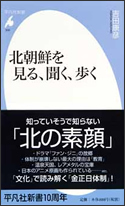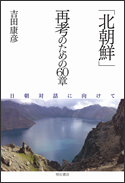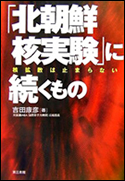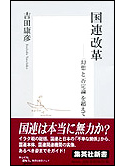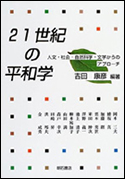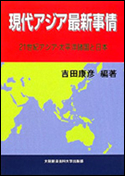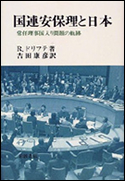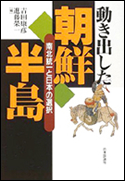2006年6月28日
【9】Japan's Nuclear Industry at a Crossroad(June 2006)
NTRODUCTION
Nuclear power is being re-assessed world-wide in view of recent oil price hikes and a sharp increase in energy needs, especially in China and India. The Western media describes it as nuclear renaissance.
In Japan, there are 55 nuclear power stations, yielding more than 45,000 megawatts of electricity a year, which accounts for 38 percent of the nation's electricity consumption. In terms of nuclear power output and the number of units, Japan ranks third in the world, next to the United States and France.
Japan, with a population of 128-million in four main islands as large as the Balkan Peninsula, but scarce of natural resources, depends on nuclear power as a most reliable and stable energy source. Beside nuclear power, coal, natural gas and oil --- three major fossil sources---make up a majority of Japan's energy production.
The rest ---some 10 percent---is provided by soft and natural energy sources, such as hydro, biomass, wind and solar power. In the wake of recent crude oil price increases, coal and nuclear power are most viable economically. Coal, however, is the worst, emitting carbon dioxide
Japan, the only country as a non-nuclear-weapon state, possess a full nuclear fuel recycling program at home, reprocessing plutonium from spent fuels out of the light-water reactors. Plutonium, however, keeps increasing in volume as a stockpile without being used as fuel for fast-breeder reactors (FBR) or light-water reactors as MOX fuel mostly due to public oppositions.
NUCLEAR POWER INTRODUCED AS A TAMED LION
Japan embarked on its own nuclear power program in 1956, three years after President Eisenhower's Atoms-for-Peace Proposal at the U.N. General Assembly session. The International Atomic Energy Agency (IAEA) was inaugurated in 1957 to ensure peaceful uses of nuclear energy by means of on-sight inspection.
In 1956, the Japan Atomic Energy Commission was established and strict domestic regulations were introduced to limit the use of nuclear energy to peaceful purposes. In 1957, Japan's first 50-kilowatt research reactor was put to the grid in Tokai Village, north of Tokyo, on the Pacific coast. The first electricity-generating 2.4-megawatt reactor started its operation in 1963.
As the only nation in the world that suffered the atomic bombings of Hiroshima and Nagasaki in 1945, anti-nuclear feelings of the Japanese people were deep-rooted so much that the Japanese Government sticks to a three non-nuclear principle; not possessing, not manufacturing and not introducing nuclear weapons..
Japan is now one of the countries most advanced in the world in the development of nuclear fuel recycling at home, including uranium enrichment and plutonium reprocessing, as well as the construction and operation of light-water reactors and a fast-breeder reactor (FBR). A prototype FBR, the Monju, however, has been left idle for the past 10 years after causing a fire accident in a liquid sodium pipeline circulating around the reactor.
In addition to 55 nuclear power reactors, mostly light-water-cooled ones using low-level enriched uranium as fuel, 12 more reactors are being planned to cope with global warming to reduce fossil fuel consumptions.
EXCELLENT SAFETY RECORDS
There had been no serious accident in Japan in the past, except for low-level radioactive leakage incidents and other minor troubles. Nobody had been killed at all. But in 1999, two workers were killed in a small uranium-processing plant in Tokai Village. The mishap was the outcome of double negligence- a lapse in safety procedures and their ignorance of volatility of radioactive material.
Another fatal accident happened in 2004 in a nuclear power station of the Kansai Electric Company on the Japan Sea coast. It was a boiled water leakage accident in an electricity-generating turbine, killing five workers on hand.
The two fatal accidents, however, did not occur in a nuclear reactor itself. Therefore, the Japanese Government and utilities are proud of safety records in nuclear power operations for the past five decades.
The Chernobyl Accident in April 1986 dealt a heavy blow to the world's nuclear power industry, leading to abolition of nuclear power plants in Austria and Italy, and to a gradual phase-out in Sweden, Germany, Switzerland, Belgium, the Netherlands and Spain. Japan was an exception, together with France, which produces 75 percent of electricity by nuclear power, exporting electricity to neighboring countries.
Japan managed to overcome the critical period by using the international influence of the IAEA, which, upon request by the Japanese Government, sent a number of technical review missions to local nuclear power plants and concluded that they were being operated safely. Their assessment was that Japan indeed provided a model in safe and stable operations.
DEADLOCK IN NUCLEAR FUEL CYCLE
The World Commission on Sustainable Development, which laid a foundation on the 1992 Rio de Janeiro Earth Summit, had concluded in 1987 that nuclear power has three fatal shortcomings, namely safety, radioactive waste management and the danger of proliferation.
Apart from safety, Japan has two obstacles. No solution has been found in radioactive waste disposal. The nation has been unable to find a site to dispose of high-level radioactive waste material. A noted Japanese scientist had once described Japan's nuclear industry as an apartment without toilet.
The Japanese Government has been recruiting from local communities a waste disposal site in return for a huge amount of subsidies in compensation. But no towns or villages have responded positively.
The United Sates, Germany and Finland have managed to designate such sites, while preparatory work for a final selection is being made in France, Sweden, Canada and Switzerland. The Japanese Government and utilities now place expectations on the possibility of the Russian Federation offering candidate sites in uninhabited Siberia as part of international cooperation and as source of foreign currency revenues.
Another headache is an accumulated plutonium stockpile, as already stated. At present, 46 tons of plutonium is possessed by Japan at home as well as at two reprocessing plants in Britain and France. Nuclear opponents claim this stockpile is equal to 5,000 Nagasaki-type nuclear bombs.
Japan's first large-scale plutonium-reprocessing plant, capable of producing 800 tons of plutonium a year, started its test-run operations at Rokkasho-mura in Aomori Prefecture in Northern Japan in December last year. The full-scale operations are to begin later this year.
As a matter of fact, there is no danger of nuclear proliferation for Japan, to which the IAEA gave an exceptional treatment last year, as an ideal case under its safeguard system. Technically impeccable, but politically volatile, this is the circumstances under which Japan is placed. Japan faces tense relationship with North and South Korea, and China. Northeast Asia is a stage of political confrontation, as the Middle East and South Asia.
Plutonium, reprocessed from spent fuels out of the light-water reactors, was originally intended to refuel the FBRs, constituting a nuclear fuel cycle as in France. The plan, however, has been deadlocked as explained above.
An alternative was to consume plutonium in light-water reactors as a MOX fuel, but has hit a snag again, meeting oppositions from local residents in fear of unexpected technical troubles and accidents. MOX fuel consumptions are an established method, practiced in a total of 56 reactors in 10 countries for more than 40 years. But public confidence in Japan's nuclear industry had been lost in the wake of a series of cover-up after minor troubles. At present, no nuclear power plants consume plutonium as MOX fuel. Plutonium is being accumulated against the will of the Japanese Government and plant operators.
In the meantime, U.S. President George Bush announced in February this year that the five nuclear-weapon states and Japan would be allowed to possess uranium enrichment and plutonium reprocessing plants at home, which, according to Mr.Bush, should be open to the other nuclear reactor-operating countries for the supply of nuclear fuel. President Bush hopes that regionally-centralized nuclear fuel banks could contribute to strengthening a nuclear non-proliferation regime.
Mr. Bush's initiative, called the Global Nuclear Energy Partnership (GNEP) indicates international recognition of Japan's nuclear fuel cycle program and its advantageous status in peaceful uses of nuclear energy. But the Bush proposal is likely to be a double-edged sword for Japan.
This means creation of three categories in the status under the NPT (Nuclear Non-proliferation Treaty) regime; namely, (1) the five nuclear-weapon states, (2) the states possessing nuclear fuel recycling programs, and (3) the states only operating nuclear reactors.
A majority of developing countries are critical of Mr. Bush's initiative as additional discrimination in the world nuclear order.
Category (1) and (2) are identical, except for Japan. Under the NPT, Japan is not a nuclear-weapon state, but international suspicions of Japan's possible nuclear armament are expected to mount abroad, as a result of this new categorization. Accumulation of unused plutonium at home is likely to add fuel to the suspicions.
SOLAR AND WIND POWER AS ALTERNATIVE ENERGY
Although the subject of this presentation is nuclear power, I wish to take this opportunity to discuss solar and wind power as new and renewable energy sources just briefly, as many of you might be interested. As for solar energy, Japanese manufacturers, such as Sharp, San-yo and Kyocera, until recently, had accounted for more than half of the world's entire production of photovoltaic panels for electricity.
Japan, therefore, had been enjoying the top share in solar power generation. The top rank was taken over by Germany last year.
Nevertheless, two out of 10 households living in independent houses in Japan are equipped with small-size photovoltaic panels, generating a total of one thousand megawatts of electricity a year. This accounts for nearly 10 units of thermal power plants of average size.
As for wind power, Germany, under a strong influence of the Green Party in coalition with Chancellor Angela Merkel of the CDU, also takes the lead in wind power generation, with an annual output of more than 20-thousand megawatts, followed by Spain, the United Sates and Denmark. The European Union plans to meet 12 percent of primary energy needs and 21 percent of electricity demand by the year 2010.
More than 15 percent of Denmark's electricity comes from wind mills, which are suitable for a small country facing the sea. This could apply to Croatia as well.
These two new and renewable energy sources, benign to environment without emitting carbon dioxide or radioactive waste material, sound attractive with a clean and clear image. But neither of them is not capable of producing large-scale power for industrial use on a constant and stable basis. No power is produced when it is cloudy or at night, or when there are no winds. In addition, they are not viable economically.
Therefore, both solar and wind power will have to remain auxiliary and subsidiary energy sources for a highly-industrialized country like Japan for the time being.
【Presentation at an international symposium in Zadar, Croatia, 28 June 2006】


